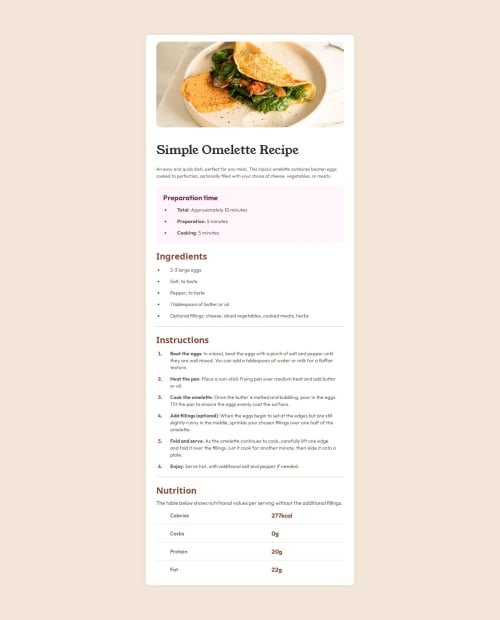Submitted over 1 year agoA solution to the Recipe page challenge
Responsive Recipe Card made with HTML and Css
@DoneWithWork

Solution retrospective
What are you most proud of, and what would you do differently next time?
- Really glad that I managed to make this website responsive on both mobile and desktop
- Learned how to style tables a little
Would probably use SASS CSS next time to simplify CSS code or something
What challenges did you encounter, and how did you overcome them?- Messy css
- Arrangement of layout
I watch a couple of youtube videos and use MDN docs for additional styles
What specific areas of your project would you like help with?- is my css a bit messy?
- how can I improve and write more efficient CSS
Code
Loading...
Please log in to post a comment
Log in with GitHubCommunity feedback
No feedback yet. Be the first to give feedback on DoneWithWork's solution.
Join our Discord community
Join thousands of Frontend Mentor community members taking the challenges, sharing resources, helping each other, and chatting about all things front-end!
Join our Discord